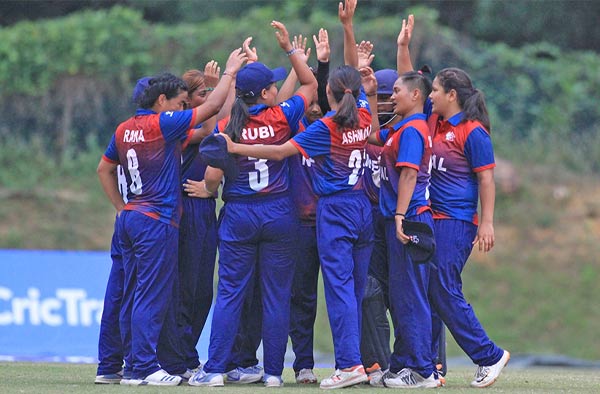The 2024 Women’s Asia Cup is set to begin on 19th July and will continue until 28th July 2024. Sri Lanka will host this year’s Asia Cup, consisting of a total of 15 matches, including two semi-finals and the final. Rangiri Dambulla International Stadium, Dambulla will host all the matches of the tournament.

The Asia Cup will feature 8 teams across two groups
|
Group A |
Group B |
|
India |
Sri Lanka |
|
Pakistan |
Bangladesh |
|
Nepal |
Malaysia |
|
UAE |
Thailand |
How is Nepal placed for the Women’s Asia Cup 2024?
Nepal is placed in Group A alongside India, Pakistan and the United Arab Emirates. Pakistan will square off against each of the three teams in the group stage matches where all the teams will play 3 matches.
What are Nepal’s fixtures?
|
Date |
Fixture |
Venue |
Time (In IST) |
|
19th July |
Vs UAE |
Dambulla stadium, Dambulla |
2:00 PM |
|
21st July |
Vs Pakistan |
Dambulla stadium, Dambulla |
7:00 PM |
|
23rd July |
Vs India |
Dambulla stadium, Dambulla |
7:00 PM |
The 2024 Women’s Asia Cup marks a significant milestone for Nepal as they make their debut in this prestigious tournament. This inaugural season presents a golden opportunity for them to showcase their skills on a larger stage and compete against more established Asian cricketing nations. For Nepal, this participation represents the culmination of years of development in women’s cricket and serves as a platform to inspire the next generation of female cricketers in the country. While facing formidable opponents, Nepal’s performance in this tournament could be a crucial stepping stone in their journey towards becoming a competitive force in women’s cricket in Asia.
What is Nepal’s Squad for Women’s Asia Cup 2024?
Indu Barma (C), Sita Rana Magar, Rajmati Airee, Rubina Chhetry, Dolly Bhatta, Mamta Chaudhary, Kabita Joshi, Kabita Kunwar, Kritika Marasini, Puja Mahato, Bindu Rawal, Roma Thapa, Sabnam Rai, Samjhana Khadka, Kajal Shrestha
SWOT analysis of Nepal’s squad for Women’s Asia Cup 2024
Strengths of Nepal squad selected for Women’s Asia Cup 2024:
Captain Indu Barma:
Nepal women’s team’s strength in the Women’s Asia Cup 2024 is epitomized by their captain, Indu Barma. A class player, Barma brings exceptional cricketing skills to the fore, capable of leading by example on the field. Her ability to handle pressure situations and guide her team tactically could prove crucial in Nepal’s maiden appearance at this level. Barma’s leadership and performance will likely be key factors in Nepal’s efforts to make a mark in this prestigious tournament.
Weakness of Nepal squad selected for Women’s Asia Cup 2024:
Nepal women’s team faces a significant challenge in the Women’s Asia Cup 2024 due to their weak pace attack. This deficiency in their bowling arsenal could be exploited by more experienced batting line-ups, particularly on pitches that favor fast bowlers. The lack of potent pace options may force Nepal to rely heavily on their spin bowlers, potentially making their strategy more predictable. Overcoming this weakness will be crucial for Nepal to remain competitive against stronger teams in the tournament.
Opportunities of Nepal squad selected for Women’s Asia Cup 2024:
The 2024 Women’s Asia Cup presents a significant opportunity for Nepal’s young players to gain valuable experience on a major international stage. This tournament offers them a chance to test their skills against top-tier competition, potentially accelerating their development as cricketers. Strong performances could boost the players’ confidence and raise the profile of women’s cricket in Nepal. Additionally, this exposure could help identify emerging talents who may form the core of Nepal’s national team in the years to come.
Threats of Nepal squad selected for Women’s Asia Cup 2024:
Nepal’s women’s team faces a significant threat in the Women’s Asia Cup 2024 due to their heavy reliance on key players Sita Rana Magar, Indu Barma, Rubina Chetry, and Puja Mahato. This over dependency could leave the team vulnerable if these players underperform or face injury. Opposition teams may focus their strategies on neutralizing these key players, potentially exposing weaknesses in the rest of the lineup. Developing a more balanced team performance and reducing this reliance will be crucial for Nepal’s success in the tournament.